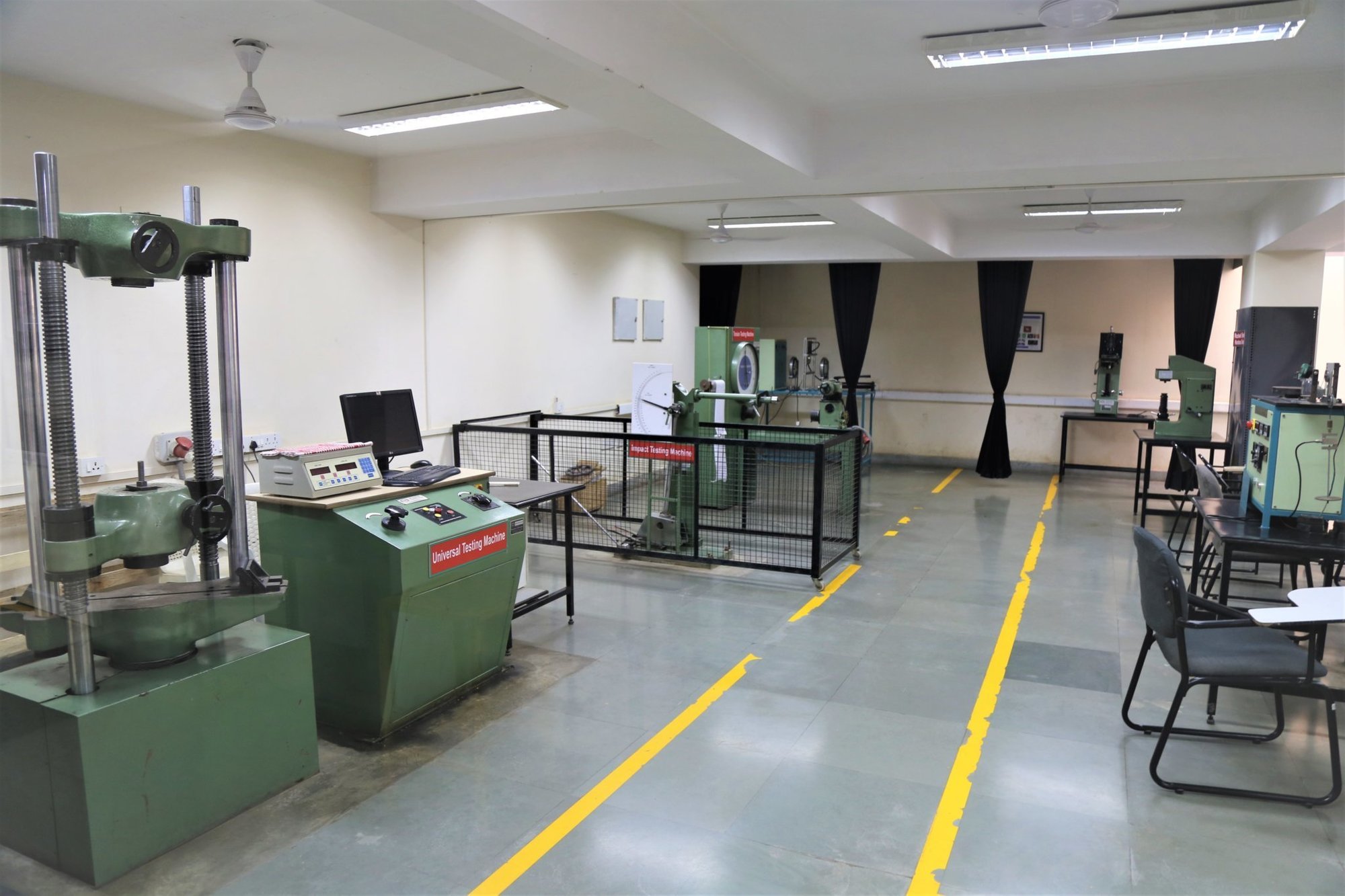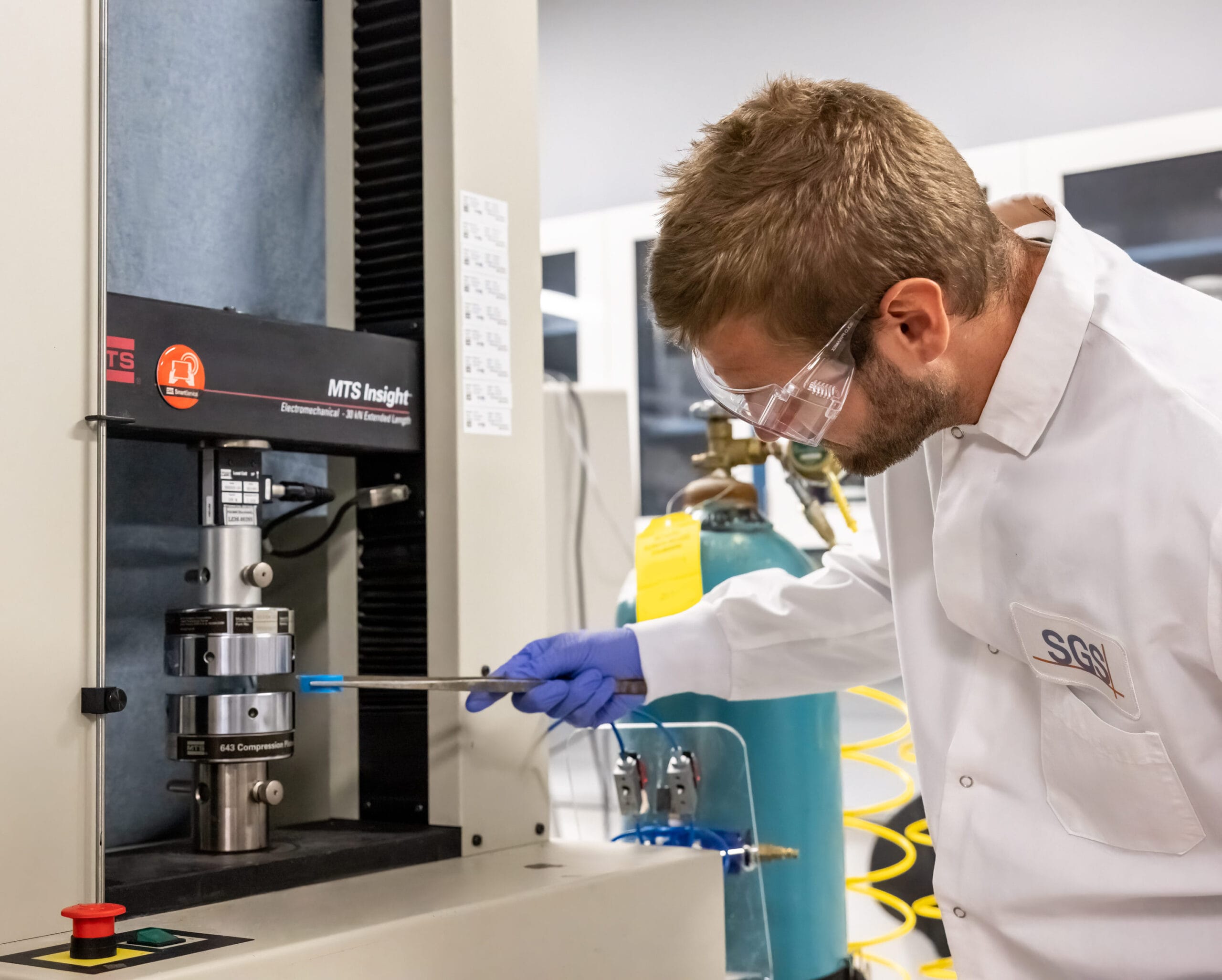Material Testing Lab Excellence: Unveiling the Secrets to Task Sturdiness
Wiki Article
Improvements in Product Screening for Unprecedented Efficiency
This brings us to the intriguing world of innovations in product testing, where innovative methods and innovative techniques are transforming the means we understand and enhance material performance. Allow us get started on this journey of exploration, as we reveal the impressive improvements in product testing and their possible to shape the future of various markets.Non-Destructive Checking Methods
Non-destructive testing strategies are essential for assessing the integrity and integrity of materials without creating any kind of damage. These methods play a critical duty in various sectors, including aerospace, auto, construction, and production. By using non-destructive testing methods, designers can assess the properties and characteristics of products, making certain that they satisfy the required criteria and specs.
Another extensively used method is magnetic fragment screening (MT), which is mostly utilized for detecting surface area and near-surface flaws in ferromagnetic materials. By applying an electromagnetic field to the material and after that introducing magnetic bits, any kind of issues provide can be conveniently identified. MT is specifically reliable for discovering splits, lack of blend, and other surface area irregularities.
Advanced Materials Characterization Techniques
Advanced products characterization techniques are essential devices for examining the homes and performance of products in different sectors. These approaches involve making use of sophisticated methods to recognize the microstructure and analyze, structure, and actions of products at the molecular and atomic degrees. By employing advanced characterization engineers, approaches and researchers can gain valuable understandings right into the architectural stability, mechanical residential or commercial properties, thermal stability, and chemical sensitivity of materials.One widely made use of technique is scanning electron microscopy (SEM), which gives high-resolution photos of a material's surface area. SEM enables the assessment of the product's morphology, topography, and essential make-up. An additional important method is X-ray diffraction (XRD), which provides details regarding the crystal framework and phase structure of products. XRD is particularly valuable for assessing the setup of atoms in crystalline products.
Moreover, transmission electron microscopy (TEM) allows scientists to observe the interior framework of products with atomic resolution. TEM is capable of disclosing information such as grain limits, defects, and dislocations, supplying important details regarding a material's mechanical homes - material testing lab. In addition, spectroscopic strategies like Fourier-transform infrared spectroscopy (FTIR) and Raman spectroscopy can be used to analyze the chemical structure, molecular structure, and vibrational settings of products
High-Temperature and Extreme Environment Testing
In order to evaluate the efficiency of products in severe and high-temperature environments, strenuous screening approaches are needed. These testing methods are made to replicate the problems that products may encounter in real-life applications, such as aerospace, automotive, and power sectors. Extreme and high-temperature setting screening intends to evaluate the actions of materials under extreme warmth, stress, and various other difficult conditions.One frequently utilized method for high-temperature screening is thermal evaluation. This technique entails subjecting the material to varying temperature levels while determining its thermal homes, such as thermal growth, warmth capacity, and thermal conductivity. By examining these properties, researchers can determine just how the material will act under different temperature level problems, allowing them to choose the most suitable products for particular applications.
One more vital element of high-temperature and severe setting screening is mechanical testing. This entails subjecting the material to mechanical anxiety at elevated temperature levels, mimicing the conditions it might experience in real-world applications. Mechanical screening assists evaluate the material's strength, ductility, and resistance to contortion and failing under high-temperature and extreme problems.
Furthermore, environmental testing is vital to examine the product's efficiency in extreme problems, such as harsh settings or exposure to extreme weather conditions. This screening entails subjecting the product to numerous ecological elements, such as humidity, salt spray, and UV radiation, to review its resilience and resistance to deterioration and deterioration.

Simulation and Modeling for Product Performance
Simulation and modeling play an important function in understanding and predicting the performance of materials in numerous applications. With innovations in computational capabilities, researchers and engineers can currently simulate and model the actions of materials under different conditions, providing useful insights right into their efficiency and aiding in the advancement of brand-new materials with improved residential or commercial properties.Through simulation and modeling, scientists can examine the tiny and macroscopic behavior of materials, including their mechanical, thermal, and electrical buildings. This allows them to anticipate how materials will certainly behave under various tons, temperature levels, and ecological problems, without the need for costly and lengthy experimental testing.
Simulation and modeling strategies likewise enable researchers to optimize material designs and recognize potential weaknesses or failing points. By examining the material's response to various forces and stimulations, designers can make informed choices concerning product option and layout adjustments to enhance performance and resilience.
Furthermore, simulation and modeling can aid in the advancement of products for particular applications. In the aerospace industry, researchers can imitate the habits of products under extreme temperature levels and pressures to develop lightweight yet solid materials for airplane frameworks. In the clinical field, simulation techniques can be used to examine the communications in between materials and organic cells, bring about the growth of biocompatible products for implants or medication delivery systems
Combination of Artificial Knowledge in Material Screening
The unification of Expert system (AI) right into material testing has actually reinvented the field, making it possible for scientists to attain extraordinary accuracy and effectiveness in examining material performance. AI formulas can refine and examine big quantities of information, recognizing patterns and connections that might not be promptly noticeable to official source human researchers. This allows for even more thorough and specific testing, leading to a deeper understanding of material behavior.One application of AI in material testing remains in the advancement of predictive designs. By educating AI formulas on vast datasets of material residential or commercial properties and efficiency, scientists can develop versions that can properly anticipate the actions of brand-new products under numerous problems. This can greatly speed up the material advancement process, as it allows scientists to screen and prioritize materials with wanted buildings.
In enhancement to predictive modeling, AI can additionally be used to enhance screening procedures. By evaluating historic testing information, AI formulas can Visit Website determine one of the most informative and reliable examinations to execute, decreasing the time and resources required for product assessment.
Furthermore, AI can help in the recognition of anomalies or flaws in products. By contrasting test outcomes versus anticipated end results, AI formulas can detect inconsistencies and sharp researchers to potential problems. This can assist boost top quality control procedures and ensure making use of materials that meet the required specifications.
Verdict

By analyzing these buildings, researchers can establish how the material will certainly behave under different temperature problems, enabling them to investigate this site choose the most ideal materials for details applications.
The consolidation of Artificial Intelligence (AI) right into product screening has actually transformed the area, allowing scientists to accomplish unmatched accuracy and efficiency in examining material performance.In verdict, advancements in material testing techniques, characterization approaches, extreme and high-temperature atmosphere screening, and the integration of artificial knowledge have actually considerably added to the advancement of extraordinary efficiency in products. These innovations have actually enabled for the identification of material buildings and actions, enabling the design and optimization of products for various applications. material testing lab. With additional research and technological advancements, product testing will certainly continue to play a vital function in pressing the boundaries of material performance
Report this wiki page